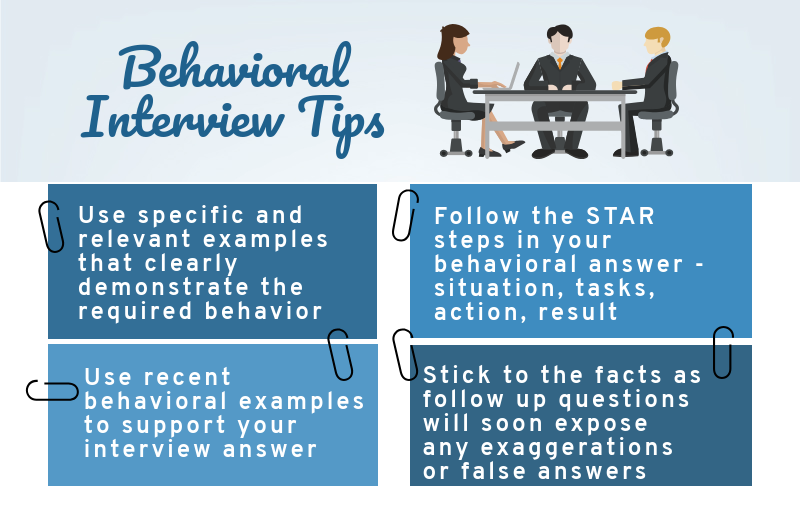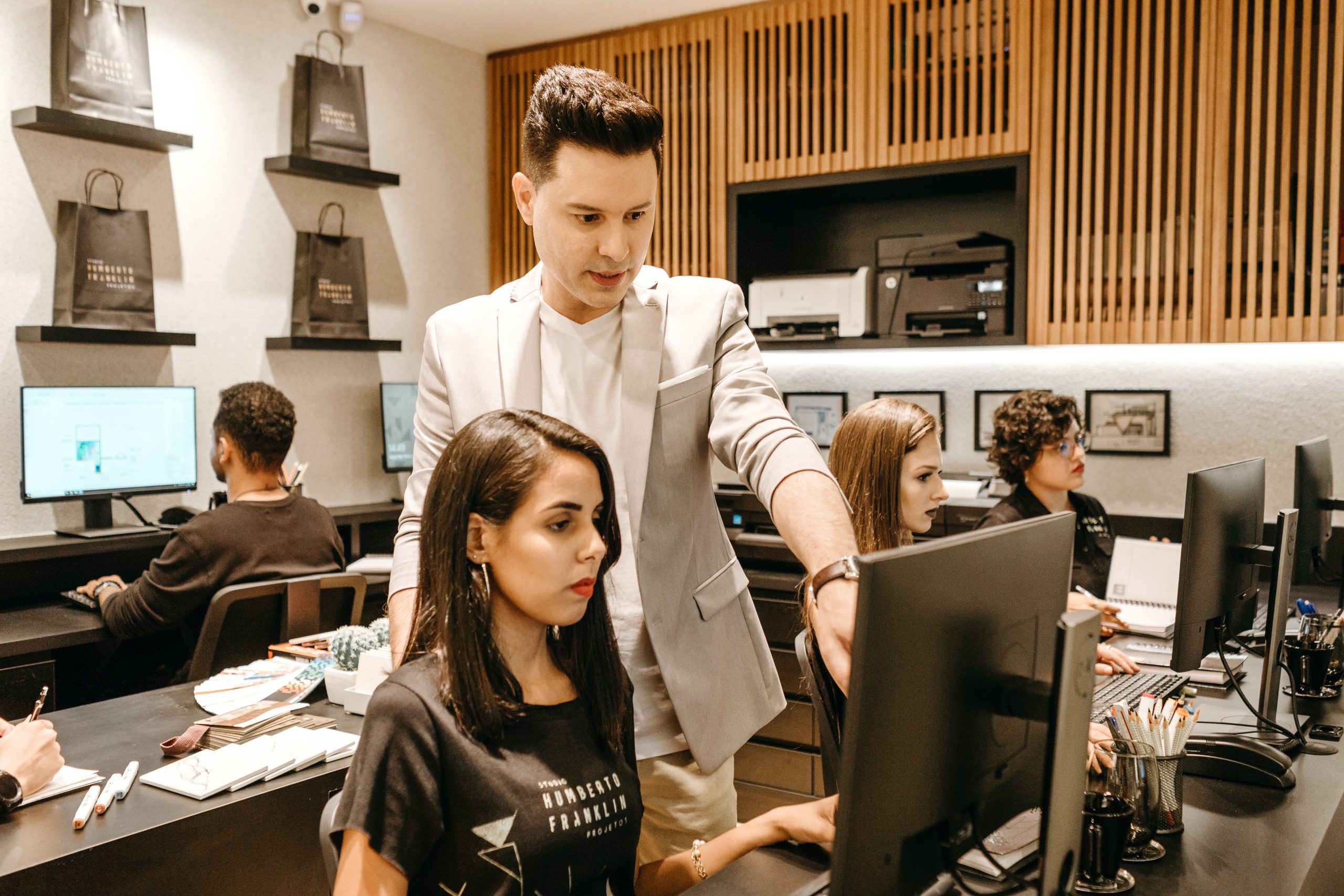How to prepare for behavioral interview questions in Canada
So, you’ve landed an interview in Canada and you’re wondering how to best prepare for those tricky behavioral interview questions? Look no further! This article is here to guide you through the process, helping you understand what to expect and how to nail those questions with confidence. Whether you’re a seasoned professional or a recent graduate, mastering the art of behavioral interviews can greatly increase your chances of landing your dream job in the Great White North. So, let’s dive into the strategies and tips that will make you stand out from the competition and impress any Canadian employer!
.png?width=1414&name=Behavioral%20questions%20(1).png)
Understanding Behavioral Interview Questions
Definition of Behavioral Interview Questions
Behavioral interview questions are a common type of interview question that employers use to assess a candidate’s past behavior and predict their future performance. Unlike traditional interview questions that focus solely on technical skills and qualifications, behavioral interview questions aim to understand how a candidate has acted in specific situations and how they will likely perform in similar scenarios in the future.
These questions require candidates to provide concrete examples from their past experiences, allowing employers to gain valuable insights into their problem-solving abilities, communication skills, and how well they align with the company’s values and culture.
Why Employers Use Behavioral Interview Questions
Employers use behavioral interview questions for several reasons. Firstly, they provide a more accurate measure of a candidate’s capabilities and potential fit within the organization as they are based on real-life scenarios. This approach helps employers go beyond surface-level responses and gain deeper insights into a candidate’s thought processes, decision-making abilities, and interpersonal skills.
Secondly, behavioral interview questions allow employers to evaluate a candidate’s ability to handle specific situations that are common in the role they are interviewing for. By assessing a candidate’s past performance, employers can predict how they might handle similar challenges in the future, leading to more informed hiring decisions.
Lastly, behavioral interview questions help employers assess a candidate’s compatibility with the company culture. By delving into a candidate’s past experiences and actions, employers can determine whether they possess the desired values, ethics, and attitudes that align with the organization’s culture. This ensures that new hires will not only excel in their roles but also contribute positively to the overall work environment.
Researching the Company
Understanding the Company Culture
Before attending a behavioral interview, it is crucial to research and understand the company culture. Company culture refers to the shared values, beliefs, and behaviors that define how people within the organization interact and work together. By understanding the company culture, you can tailor your interview responses to reflect the values and behaviors that are important to the organization.
To research the company culture, start by exploring the company’s website, social media profiles, and any published materials such as annual reports or press releases. Pay attention to the company’s mission and vision statements, as these provide insight into its core values and long-term goals. Additionally, look for employee testimonials or reviews on websites such as Glassdoor to gain a better understanding of the day-to-day work environment and employee experiences.
Reviewing the Job Description
Another important step in preparing for a behavioral interview is thoroughly reviewing the job description. The job description outlines the specific qualifications, skills, and responsibilities required for the role. By analyzing the job description, you can identify the key competencies that the employer is seeking and prepare thoughtful examples that demonstrate your proficiency in these areas.
Pay close attention to the job requirements and make note of the required skills and qualifications. Think about how your past experiences align with these requirements and identify specific examples that highlight your relevant achievements. This will enable you to provide well-rounded and tailored responses during the interview, increasing your chances of impressing the employer.
Researching Recent Events or News about the Company
In addition to understanding the company culture and reviewing the job description, it is beneficial to stay updated on recent events or news about the company. This demonstrates genuine interest and engagement with the organization, which can leave a positive impression on the interviewer.
Keep an eye on the company’s website, social media platforms, and industry news sources for any recent achievements, product launches, or changes in leadership or strategy. Familiarize yourself with these updates and consider how they may impact the company and the role you are applying for. Incorporating this knowledge into your interview responses can showcase your enthusiasm and ability to stay informed, reflecting well on your candidacy.

Identifying Core Competencies
Understanding Common Core Competencies
Core competencies, also known as key competencies or skills, refer to the essential qualities and abilities that are necessary to excel in a particular role. These competencies vary depending on the industry and the specific job position. Understanding the common core competencies for the role you are interviewing for is crucial to effectively prepare for behavioral interview questions.
Start by reviewing the job description and identifying the skills and qualifications that are listed as requirements or preferred qualities. These are the core competencies that the employer has deemed important for success in the role. Additionally, you can research industry-specific competencies to gain a broader understanding of the skills and traits that employers in your field value.
Some common core competencies include:
- Communication: the ability to convey information clearly and effectively.
- Problem-solving: the capacity to identify and resolve challenges in a logical and efficient manner.
- Leadership: the skill to inspire and guide others towards achieving common goals.
- Adaptability: the capability to adjust and thrive in rapidly changing environments.
- Teamwork: the aptitude to collaborate effectively with others to achieve shared objectives.
Matching Your Experience to Core Competencies
Once you have identified the core competencies for the role, it is essential to match your own experiences and achievements to these competencies. Take the time to reflect on your past experiences, paying attention to instances where you have demonstrated the required skills and qualities.
Think about specific projects, accomplishments, or challenges where you have successfully utilized these competencies. Consider the actions you took, the results you achieved, and the impact of your actions on the team or organization. This reflection will help you identify strong examples that align with the core competencies, enabling you to provide compelling and relevant responses during the interview.
Reflecting on Past Experiences
Identifying Relevant Experiences
In preparation for a behavioral interview, it is essential to identify relevant experiences from your past that align with the core competencies and job requirements. Reflect on your previous work experiences, internships, volunteer work, or academic projects to find situations where you demonstrated the skills and qualities needed for the role.
Consider both positive and challenging situations, as employers are often interested in how candidates handle adversity. Look for instances where you had to overcome obstacles, navigate team dynamics, or make difficult decisions. By selecting a range of experiences, you can showcase your versatility and adaptability, which are highly valued by employers.
Using the STAR Method for Structured Responses
To provide structured and well-articulated responses during a behavioral interview, it is recommended to use the STAR method (Situation, Task, Action, Result). The STAR method helps you provide a clear framework for your responses, ensuring that you convey your experiences in a concise and effective manner.
- Situation: Start by providing a brief overview of the situation or challenge you faced. Provide context and set the stage for the interviewer.
- Task: Explain the specific task or goal that needed to be achieved in the situation. This helps the interviewer understand the objective you were working towards.
- Action: Describe the actions you took to address the situation. Focus on your individual contributions and any relevant skills or competencies you utilized.
- Result: Discuss the outcome of your actions and the impact it had on the situation, team, or organization. Emphasize any quantifiable results or positive outcomes.
Using the STAR method allows you to provide a structured and comprehensive response, highlighting your abilities and achievements with clarity and organization.

Preparing Specific Examples
Selecting Relevant Examples
To effectively respond to behavioral interview questions, it is crucial to select relevant examples from your past experiences that directly align with the core competencies and job requirements. Aim to choose examples that demonstrate a variety of skills and qualities, showcasing your versatility and adaptability.
Consider the competencies that are most important for the role and select examples that highlight your proficiency in those areas. Ensure that your examples are recent and relevant, providing an accurate representation of your current capabilities. By choosing specific and focused examples, you can provide a more impactful response that resonates with the interviewer.
Crafting Strong and Impactful Stories
When preparing your examples for a behavioral interview, it is important to craft strong and impactful stories. Stories that are well-structured, engaging, and demonstrate your skills and qualities effectively are more likely to leave a lasting impression on the interviewer.
Begin your stories by setting the stage and providing context. Clearly explain the situation or challenge you encountered, including any relevant background information. This allows the interviewer to understand the circumstances in which you demonstrated your skills.
Next, focus on the actions you took to address the situation. Be specific and provide details about the steps you took and the strategies you implemented. Highlight the competencies you utilized and the qualities you exhibited, explaining how they contributed to the resolution of the problem.
Finally, describe the results of your actions and the impact they had on the situation, team, or organization. Quantify your achievements whenever possible and emphasize any positive outcomes. This demonstrates the value you brought to the table and reinforces your suitability for the role.
Crafting strong and impactful stories will help you effectively convey your abilities and experiences during the behavioral interview, making it easier for the interviewer to assess your fit for the position.
Practicing Your Responses
Mock Interview with a Friend or Mentor
One of the most effective ways to prepare for a behavioral interview is to participate in a mock interview with a friend or mentor. A mock interview allows you to practice your responses in a realistic setting and receive constructive feedback on your performance.
Choose someone who is familiar with behavioral interview questions and the expectations of the role you are applying for. Provide them with a list of sample questions or create scenarios that align with the core competencies and job requirements. During the mock interview, treat it as if it were a real interview, maintaining a professional demeanor and responding as you would during the actual interview.
After the mock interview, ask for feedback from your friend or mentor. Discuss areas where you excelled and areas where you could improve. Take note of their observations and suggestions and use them to refine your interview responses. Regularly engaging in mock interviews will help you become more comfortable and confident in your ability to respond to behavioral interview questions.
Recording and Reviewing Your Responses
In addition to participating in mock interviews, consider recording your interview responses and reviewing them afterward. Recording your responses allows you to objectively assess your performance and identify areas for improvement.
Set up a quiet and well-lit space where you can comfortably record yourself answering sample behavioral interview questions. Use a smartphone or webcam to capture the video. Afterward, review the recordings and pay attention to your body language, tone of voice, and clarity of your responses.
Take note of any areas where you may appear nervous or fumble with your words. Additionally, assess your body language, ensuring that you maintain appropriate eye contact, use open and engaging gestures, and demonstrate active listening skills. This self-reflection and evaluation will help you identify areas for improvement and refine your delivery, enhancing your overall performance during the actual interview.
:max_bytes(150000):strip_icc()/behavioral-job-interview-questions-2059620_round2-5b4fa44ec9e77c005bf0f614.png)
Developing Strong Body Language
Maintaining Eye Contact
Strong body language is an essential aspect of a successful behavioral interview. Maintaining eye contact with the interviewer demonstrates confidence, professionalism, and active engagement in the conversation. It conveys your interest in the role and your ability to build rapport with others.
During the interview, make a conscious effort to maintain eye contact with the interviewer throughout the conversation. If there is a panel of interviewers, ensure that you look at each person when responding to their questions. Avoid excessive or prolonged eye contact, as this can be perceived as confrontational. Instead, strike a balance by briefly looking away to think or recall examples, then re-establishing eye contact as you respond to the question.
Remember, maintaining eye contact is a nonverbal way of communicating your attentiveness and confidence, so make it a priority during your behavioral interview.
Using Open and Engaging Gestures
In addition to eye contact, using open and engaging gestures can enhance your communication during a behavioral interview. Nonverbal cues such as hand gestures, posture, and facial expressions can help convey your enthusiasm and interest in the conversation.
Keep your body language open by avoiding crossed arms or closed-off postures. Instead, sit up straight, lean slightly forward, and use natural hand gestures to emphasize key points in your responses. These gestures should be purposeful and not distracting, adding emphasis and clarity to your words.
Additionally, pay attention to your facial expressions. Smile genuinely when appropriate, show active listening through nodding and maintaining an engaged expression. Remember that your body language should mirror your verbal responses, demonstrating confidence and positive energy throughout the interview.
Demonstrating Active Listening Skills
Active listening is a crucial skill to showcase during a behavioral interview. It allows you to fully understand the question, process the information, and provide thoughtful and relevant responses. Demonstrating active listening skills conveys your attentiveness and respect for the interviewer, while also ensuring that you address the question accurately.
To demonstrate active listening, maintain eye contact with the interviewer, nod intermittently to show understanding, and avoid interrupting or rushing to respond before the question is fully asked. Take a moment to process the question and gather your thoughts before delivering your response. This demonstrates that you value the interviewer’s input and are focused on providing a thorough and thoughtful answer.
Active listening also involves paraphrasing or summarizing the question to ensure mutual understanding. This shows that you are actively engaging with the conversation and allows the interviewer to clarify any points if necessary.
Demonstrating active listening skills during a behavioral interview not only helps you provide accurate responses but also showcases your ability to collaborate and communicate effectively in a professional setting.
Utilizing the CAR Approach
Context: Set the Stage for the Situation
The CAR approach, an acronym for Context, Action, and Result, is an effective way to structure your responses during a behavioral interview. In this approach, the “Context” component is used to set the stage for the situation you will be discussing.
When providing context, provide a brief overview of the situation or challenge you encountered. Be concise but ensure that you provide enough information for the interviewer to understand the circumstances. Describe the relevant background information, such as the time, place, and people involved.
For example, if asked about a time when you had to resolve a conflict within a team, you would start by providing context. You might say, “In my previous role as a project manager, there was a situation where two team members had differing opinions on the approach to a critical project milestone. This conflict jeopardized the project’s timeline and threatened the overall team dynamic.”
By setting the stage with a clear context, you provide the interviewer with important details that help them understand the situation you are about to describe.
Action: Describe the Steps Taken
After setting the context, the “Action” component of the CAR approach is used to describe the specific steps you took to address the situation. This is where you outline the actions you personally implemented to resolve the issue or achieve the desired outcome.
When describing your actions, be specific and provide detail. Discuss the strategies, techniques, or approaches you employed to overcome challenges or navigate the situation. Highlight the skills, competencies, and qualities you utilized, demonstrating how they contributed to the resolution of the problem.
Continuing with the conflict resolution example, you might say, “To address the conflict within the team, I scheduled a meeting with the concerned parties to understand their perspectives and concerns. I actively listened to both individuals, allowing each to express their viewpoints without interruption. I then facilitated a discussion where we identified common ground and collaboratively developed a compromise that met the project’s objectives while taking both individuals’ input into account.”
By describing the specific actions you took, you demonstrate your problem-solving abilities, communication skills, and ability to manage conflicting opinions or objectives.
Result: Discuss the Outcome and Impact
The final component of the CAR approach is the “Result,” which involves discussing the outcomes and impacts of your actions. Explain the results of your efforts and highlight any positive outcomes or achievements that occurred as a result.
When discussing the result, emphasize any quantifiable results or achievements that showcase your abilities. Discuss the impact your actions had on the situation, team, or organization. By discussing the result, you demonstrate not only what you accomplished but also the value you brought to the table.
Continuing with the conflict resolution example, you might say, “As a result of addressing the conflict within the team, we were able to successfully meet the project’s timeline without compromising the quality of the deliverable. The compromised solution we reached allowed both individuals to feel heard and acknowledged, which fostered a more collaborative and cohesive team dynamic moving forward. This not only ensured the project’s success but also improved team morale and enhanced overall productivity.”
By discussing the result, you showcase your ability to drive positive outcomes and demonstrate the value you can bring to future employers.

Managing Your Nerves
Deep Breathing Exercises
It is common to feel nervous before and during a behavioral interview, but managing your nerves is essential to delivering a confident and composed performance. Deep breathing exercises can be an effective technique to calm your nerves and reduce anxiety.
Before the interview, find a quiet space where you can sit comfortably. Take a few moments to focus on your breathing and gradually inhale deeply through your nose, filling your lungs with air. Pause for a few seconds, then slowly exhale through your mouth, releasing any tension or stress. Repeat this process several times until you feel a sense of relaxation.
Deep breathing exercises help activate the body’s relaxation response, which counteracts the body’s stress response. By practicing deep breathing before the interview, you can calm your nervous system and promote a state of mental and physical well-being.
Positive Visualization
Positive visualization is another powerful technique to manage nerves and build confidence before a behavioral interview. This technique involves mentally rehearsing successful interview scenarios and envisioning yourself delivering strong and impressive responses.
Take a few moments each day leading up to the interview to visualize yourself entering the interview room, greeting the interviewer, and answering questions with confidence and clarity. Imagine the positive reactions from the interviewer and the feeling of satisfaction when providing well-crafted responses. Visualize yourself maintaining good eye contact and using engaging gestures, leaving a lasting impression on the interviewer.
Positive visualization helps build confidence by programming your mind to associate the interview experience with success and positive outcomes. By consistently visualizing success, you can reduce anxiety and increase your confidence levels, allowing you to perform at your best during the actual interview.
Building Confidence through Preparation
One of the most effective ways to manage your nerves is to build confidence through thorough preparation. By investing time and effort in researching the company, identifying core competencies, and crafting strong responses, you can enter the interview with a sense of preparedness and confidence in your abilities.
Conducting research, practicing your responses, and participating in mock interviews are all important steps in building your confidence. The more familiar you become with your own experiences, the company, and the expected interview questions, the more confident you will feel in your ability to respond effectively.
Additionally, remind yourself of your accomplishments, skills, and qualifications. Reflect on your strengths and the value you can bring to the role and the organization. Recognizing your strengths and achievements will boost your confidence and help you convey your capabilities to the interviewer.
Remember, confidence is key during a behavioral interview. Building confidence through thorough preparation, positive visualization, and self-affirmation will help you manage your nerves and deliver a strong performance.
Asking Questions at the End
Preparing Insightful Questions
Asking thoughtful and insightful questions at the end of a behavioral interview not only demonstrates your genuine interest in the role and the company but also allows you to gather important information to help assess your fit for the position. Before the interview, prepare a list of questions that reflect your curiosity and desire to learn more about the organization.
Consider asking questions about the company’s future goals and strategies, career development opportunities, or the team dynamic. Ask about potential challenges or opportunities related to the role. Avoid questions that could easily be answered through basic research or questions that focus solely on salary or benefits.
By asking insightful questions, you show the interviewer that you have done your homework and are genuinely interested in the position. This can leave a positive impression and reinforce your suitability for the role.
Showing Genuine Interest in the Role and Company
In addition to asking insightful questions, it is important to show genuine interest in the role and the company throughout the interview. Employers value candidates who are passionate about the work they do and the industry they are in.
Demonstrate your interest by actively engaging in the conversation, asking follow-up questions, and expressing enthusiasm when discussing relevant topics. Share your knowledge of the company culture, recent achievements, or industry trends during appropriate moments in the interview. This demonstrates that you have taken the time to research the company and are genuinely excited about the opportunity to contribute to its success.
Showing genuine interest throughout the interview helps build rapport with the interviewer and showcases your motivation and enthusiasm. It can help differentiate you from other candidates and increase your chances of being considered for the role.
In conclusion, preparing for behavioral interview questions is essential for success in the Canadian job market. By understanding the purpose and structure of behavioral interviews, researching the company, identifying core competencies, reflecting on past experiences, and practicing your responses, you can effectively showcase your skills, abilities, and suitability for the role.
Remember to utilize the STAR method for well-structured responses, develop strong body language, manage your nerves through deep breathing and positive visualization, and show genuine interest in the role and company. By following these strategies, you can confidently navigate behavioral interview questions and leave a lasting impression on employers. Good luck with your future interviews!







